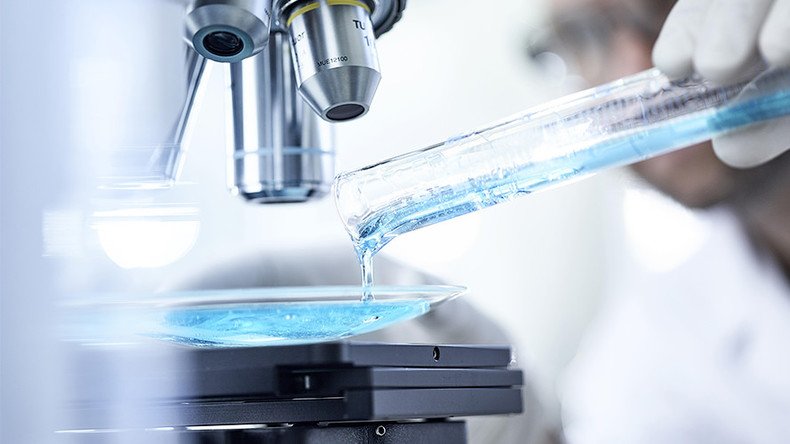Physicists create mind-bending ‘negative mass fluid’

US scientists have managed to surprise science geeks across the globe, creating a unique fluid with negative mass – but that actually stands for an object moving forward when pushed back.
The creation began inside a lab at Washington State University (WSU), when physicists cooled rubidium atoms to just slightly above absolute zero. This created what is known as a Bose-Einstein condensate.
When particles are in this state, they move extremely slowly and behave like waves. They synchronize and move in unison as 'superfluid,' which flows without losing energy, according to a WSU press release.
‘Negative mass’ created at #WSU.
— WSU News (@WSUNews) April 11, 2017
https://t.co/wvGP6vwn9w#GoCougs
The team of physicists, led by WSU professor of physics and astronomy Peter Engels, then used lasers to slow the particles. This not only made them colder, but also allowed hot, high energy particles to escape like steam – which further cooled the material.
"The lasers trapped the atoms as if they were in a bowl measuring less than a hundred microns across," the press release states.
"At this point, the rubidium superfluid has regular mass. Breaking the bowl will allow the rubidium to rush out, expanding as the rubidium in the center pushes outward."
Physicists have created a system with 'negative mass': when you push it, it moves toward you. Wild! https://t.co/bUJU1J9KYqpic.twitter.com/oVnvk0C0GC
— Corey S. Powell (@coreyspowell) April 13, 2017
To create negative mass, Engels and his team applied a second set of lasers which kicked the atoms back and forth and changed the way they spin. After this was done, the rubidium behaved as if it had negative mass, so long as it rushed out fast enough.
"Once you push, it accelerates backwards," said Michael Forbes, who acted as a theorist analyzing the system. "It looks like the rubidium hits an invisible wall."
While the phenomenon of negative mass is not entirely new, it is rarely created in laboratory conditions, according to Forbes.
Although matter can have a negative mass in the same way that an electric charge can either be positive or negative, people rarely think in these terms because "the everyday world sees only the positive aspects of Isaac Newton's Second Law of Motion," the press release states.
That is, the world typically only sees objects’ acceleration in the direction they get pushed – not in the opposite direction.
According to Forbes, negative mass can be used to explore some of the more challenging concepts of the cosmos, and noted that the "exquisite control" physicists had over the negative mass is paramount.
"This heightened control gives researchers a new tool to engineer experiments to study analogous physics in astrophysics, like neutron stars, and cosmological phenomena like black holes and dark energy, where experiments are impossible," the press release states.
The research was published in the journal Physical Review letters.













